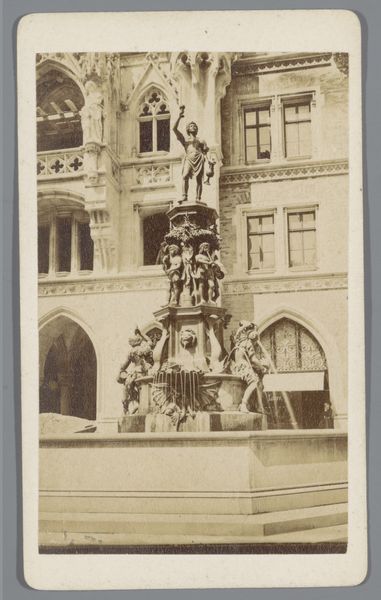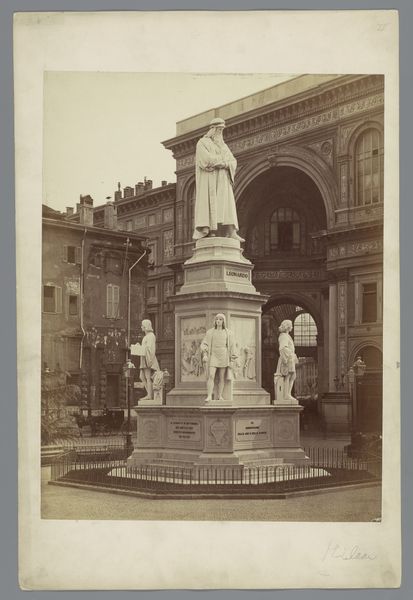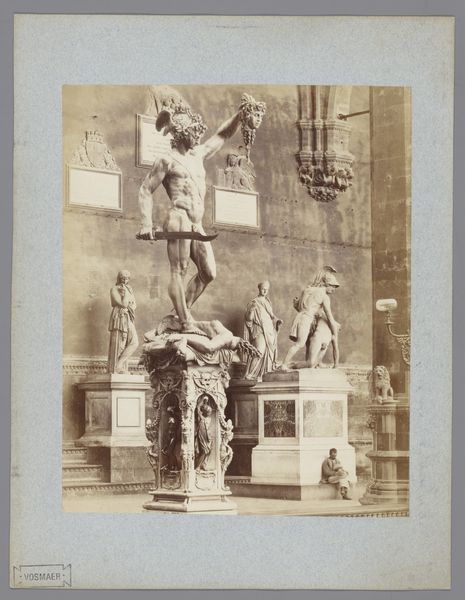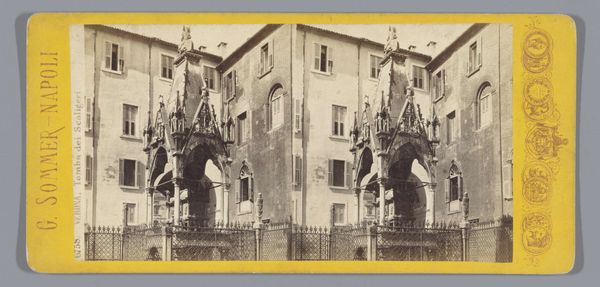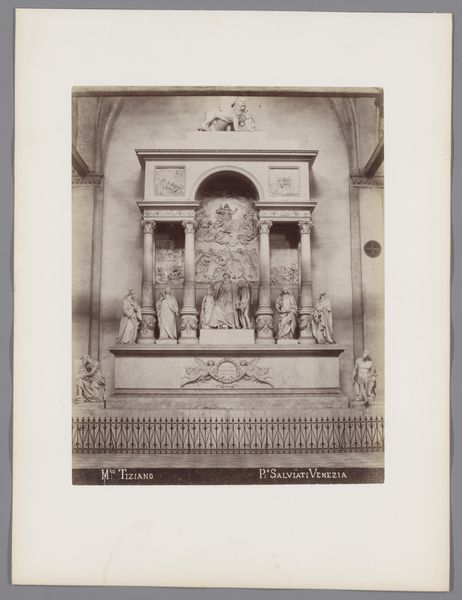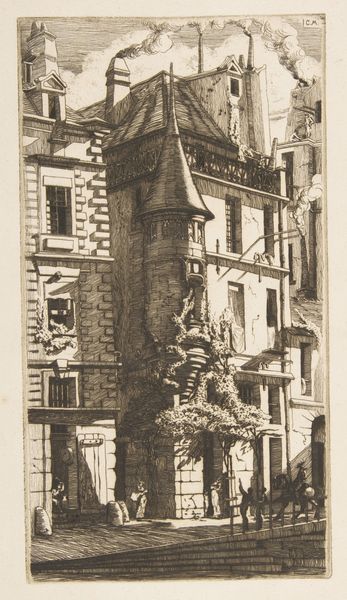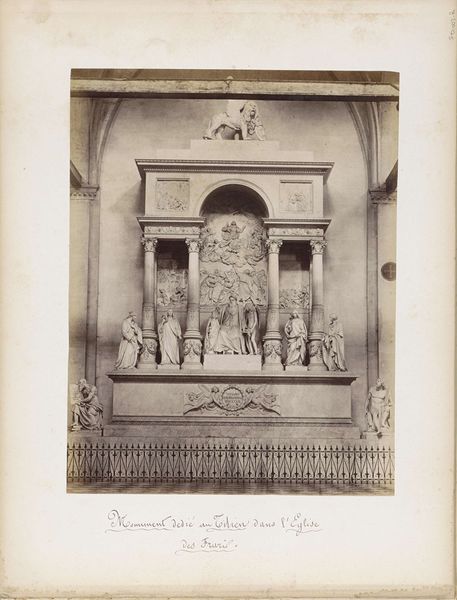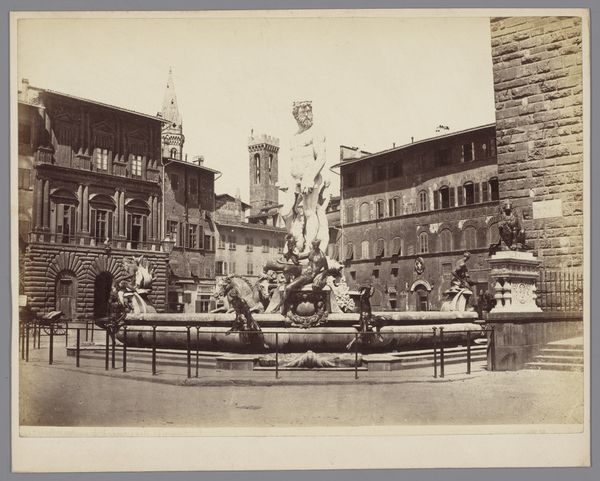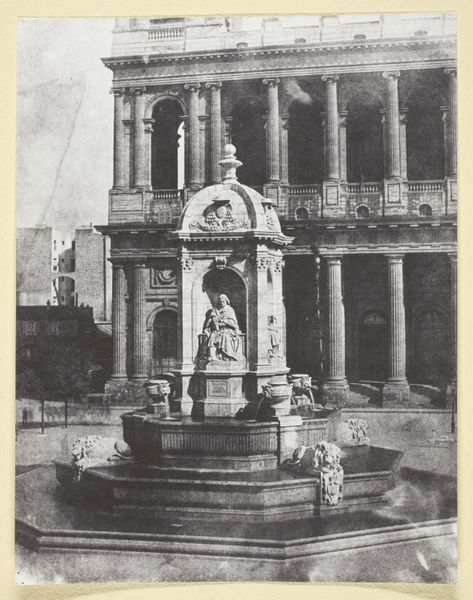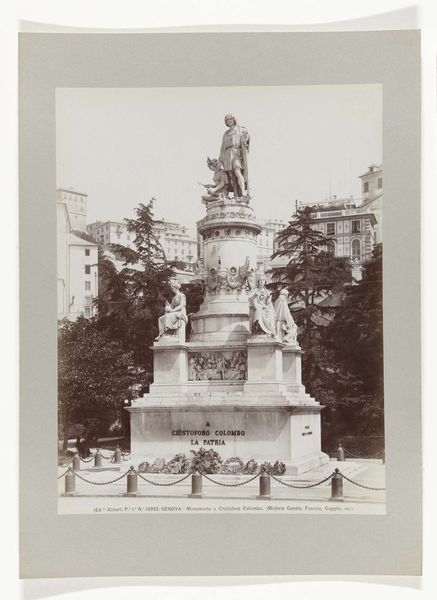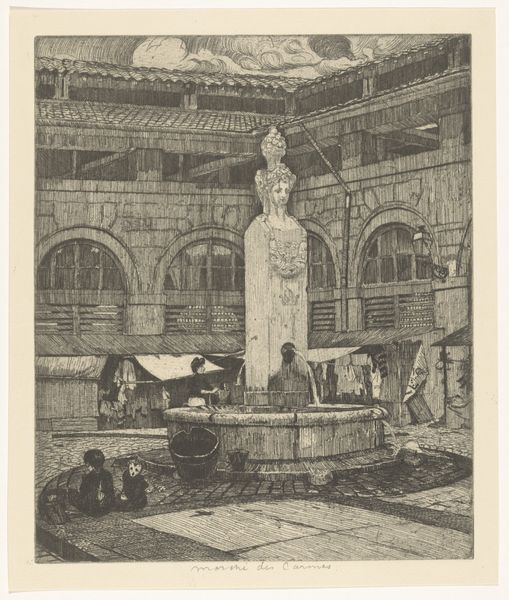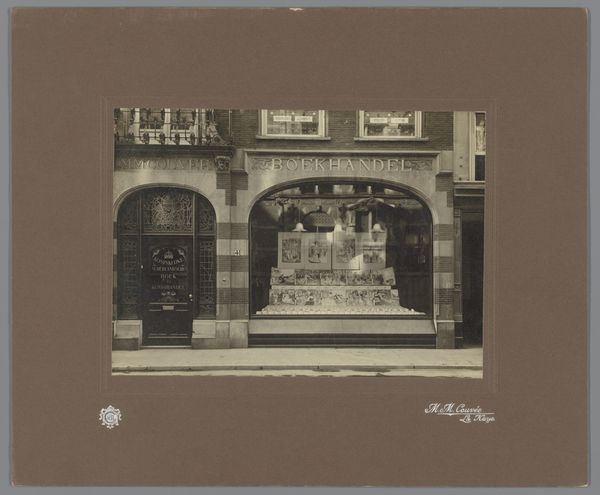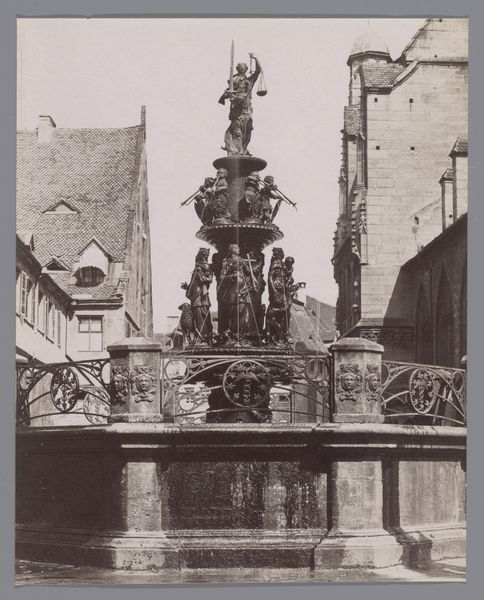
print, photography, sculpture
#
portrait
# print
#
classical-realism
#
photography
#
ancient-mediterranean
#
sculpture
#
cityscape
Dimensions: height 252 mm, width 189 mm, height 327 mm, width 242 mm
Copyright: Rijks Museum: Open Domain
Editor: So, this is a photograph, probably from the late 19th century, by Fratelli Alinari, capturing the sculptural crowning of the Tomba di Can Signorio. It’s housed here at the Rijksmuseum. There’s a stoic gravity to it that's kind of arresting... so ornate, even! What do you see in this piece? Curator: Arresting is the right word. What jumps out for me is the odd juxtaposition of the monumental and the mundane. You have this incredibly elaborate, almost theatrical tomb sitting right in the middle of what looks like everyday urban architecture. The Fratelli Alinari were masters of capturing the tension between antiquity and modernity. The photograph doesn’t just show us a monument; it suggests a layering of time itself. The city becomes a character, doesn't it? Almost as important as the tomb. What about the sculpture itself? What story does it whisper to you? Editor: Well, to me, the sculpture whispers of power and legacy, I mean, with the equestrian statue perched right on top! But that brings up another question - why capture it in a photograph? Wouldn't a drawing make a statement? Curator: Precisely. And it's that power, frozen in time, that’s made so accessible by a photo. The Alinari brothers democratised art. Photography collapses distance and hierarchy in a way that, say, an exclusive oil painting simply couldn't. Suddenly, anyone, anywhere can ponder the same marble god-kings once only visible to a select few. But there's also that hint of decay, almost. That fading sepia tone suggests that even the grandest legacy might fade into memory... don't you think? Editor: Absolutely! So it’s not just a celebration, it's a meditation on the ephemeral nature of, well, everything. That gives me something new to consider! Curator: Me too. Thank you for your wonderful perspectives.
Comments
No comments
Be the first to comment and join the conversation on the ultimate creative platform.
